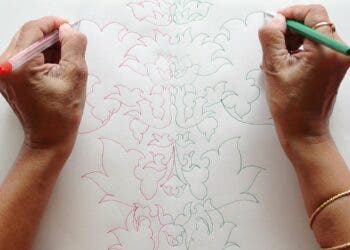
People have been equally fascinated and frightened by left-handed people for generations. The Latin for “left” is literally sinister (Italians still call it sinistra), and the left hand has historically been associated with witchcraft and devil worship. But, even in modern times, left-handers still face difficulties in society, from being forced to switch to their right hand in school to having to deal with products meant to be used with their non-dominant hand.
Why does a small subset of the population prefer to use their left hand for manual tasks? For that matter, why don’t we use either hand just as well? These aren’t easy questions to answer, and the jury is still out. But if more-recent research is any indication, a good place to look is in your genes. Identical twins, for instance, are much more likely to share handedness preference than fraternal twins.
When the double helix of DNA was decoded decades ago, many researchers hoped to look for genetic signs that may explain hand preference. Since most people are right-handed, a gene somewhere must be responsible, and a mutation would lead to left-handedness. This was the thinking early on.
However, things aren’t at all that simple.
Decoding handedness
There is no single gene that codes for handedness. A 2019 analysis involving vast data from the UK Biobank, the International Handedness Consortium, and 23andMe uncovered 41 areas in the DNA linked to left-handedness. It turns out that handedness, like asthma and height, is a polygenic trait: many genes are involved and each makes a tiny contribution.
Now, a new study has made its contribution to our knowledge of the inheritable nature of left-handedness in humans. The researchers at the Max Planck Institute for Psycholinguistics in the Netherlands have uncovered rare protein-altering genetic variants that may be associated with this trait.
“This was really curiosity-driven research about a mystery in human biology: what is the genetic basis of the brain’s left-right axis? We know that the two cerebral hemispheres already start to develop differently in the human embryo, but the mechanism is not known. Finding genes linked to asymmetries of the brain or behavior, like handedness, can give some clues,” Clyde Francks, the head of the Imaging Genomics research group at the Max Planck Institute, Nijmegen, and lead author of the new study, told ZME Science.
“There is also some possible relevance to psychiatry. Left-handedness is more common in autism and schizophrenia than in the general population, so altered asymmetry of the brain arising from genetic variants might distinguish a subset of affected people. Obviously, most left-handed people do not have autism or schizophrenia though.”
Microtubules and rare genes
The researchers turned to the same UK Biobank dataset mentioned earlier, which includes genetic data on over 350,000 individuals. They aimed to explore how very rare genetic variants influence handedness. About ten percent of the population is left-handed, in the sense that they use their left hand to write. I mention this because people aren’t always purely left- or right-handed. You’ll see people perform most manual tasks with their dominant hand but use their opposite hand for other things.
Hand dominance is a manifestation of the brain’s asymmetry, with left-handedness arising from the dominant control of the right brain hemisphere. This trait develops early in life, during embryonic development, Franks says.
The researchers found the heritability of left-handedness due to rare coding variants in the exome (the sequences of DNA that code for proteins) is very low — just 1%. Interestingly, they found that a gene called TUBB4B is 2.7 times more likely to contain rare coding variants in left-handed people.
This gene is the blueprint for a microtubule protein that makes up the cytoskeleton, the scaffolding that gives cells their shape. This suggests that microtubules are involved in setting up asymmetries of the brain, like left-hemisphere language dominance but also hand control.
“I wasn’t surprised because we already suspected from other work that brain asymmetry varies mostly due to randomness in the early embryo. For our purpose, the low heritability was not a problem. Rare genetic variants in just a handful of people can pinpoint genes that give clues to developmental mechanisms of brain asymmetry in everyone. TUBB4B could be a good example of this,” Francks said.
“In the embryonic brain, microtubules might help to create the left-right axis by giving some cells an asymmetrical twist at a certain stage. Alternatively, the microtubules within cilia might give rise to asymmetrical movements and fluid flows. Cilia are projections from the cell surface that are supported by microtubules.”
The researchers also found that people with variations in DSCAM and FOXP1, two genes associated with autism, are more likely to be left-handed. This may explain why people with autism are between 2 and 3.5 times more likely to be left-handed.
Looking ahead, the researchers want to explore these findings in greater detail, with a focus on the development of brain asymmetry more broadly.
“We would like to investigate the roles of microtubules in embryonic development of brain asymmetry. Mouse embryos might provide a way to do this. Like humans, mice show some left-right differences in their brains, for example in the functioning of the auditory cortex,” Francks said.
The findings appeared in the journal Nature Communications.






